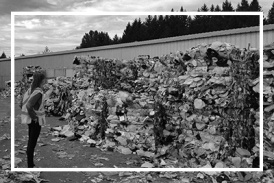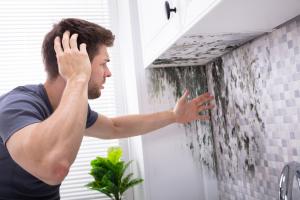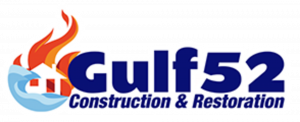Strategies for Preventing Mold Growth Following Hurricanes and Severe Storms
Earl Carr, Jr., president of Gulf 52 in Hammond, Louisiana, emphasizes that the window to prevent mold is limited. “Mold can begin to grow within 24 to 48 hours following water intrusion. Timely response is critical, especially in high-humidity regions like southern Louisiana,” said Carr. “Preventing mold is a matter of eliminating moisture and controlling environmental conditions before microbial growth can take hold.”
Following a hurricane or storm, properties often experience flooding, roof damage, or wind-driven rain infiltration. Even minor water exposure inside wall cavities, flooring systems, or insulation materials can lead to the ideal conditions for mold colonies to develop. Addressing these risks requires a systematic, multi-step approach that begins as soon as access to the property is deemed safe.
The first step in mold prevention is water removal. Standing water must be extracted from all affected areas, including subflooring, basements, and wall voids. Pumps, wet vacuums, and water extraction mats are commonly used to perform this task. Surface drying alone is not sufficient; moisture hidden beneath flooring or behind drywall can continue to fuel mold growth if not fully addressed.
After visible water is removed, the next phase involves drying and dehumidification. Industrial-grade air movers and dehumidifiers are deployed to lower ambient humidity and draw moisture out of porous materials. Moisture meters and infrared cameras are used to detect lingering water within walls, ceilings, and structural cavities. The drying process can take several days, depending on the severity of the exposure and the construction type of the building.
Porous materials that cannot be effectively dried, such as drywall, insulation, carpeting, and certain ceiling tiles, must be removed and discarded. These materials retain moisture and create an environment where mold can thrive even after surface drying has taken place. Removal reduces the risk of cross-contamination and provides better access to the structural components behind them.
Once the property is dry and water-damaged materials are removed, sanitization is required. EPA-registered antimicrobial agents are applied to all exposed surfaces, particularly in areas that experienced flooding or prolonged humidity. These disinfectants help eliminate bacteria, spores, and fungi before they can develop into widespread mold infestations. Careful application, proper dilution, and adequate contact time are critical to ensure effectiveness.
Ventilation also plays a key role. Even after structural drying is complete, enclosed spaces such as closets, attics, and crawlspaces may continue to retain moisture if not ventilated. Strategically placed fans, open windows (when conditions permit), and HVAC system adjustments are used to maintain airflow and encourage evaporation in confined areas.
In some cases, additional protective measures are taken to prevent future mold growth. Sealants and mold-resistant coatings can be applied to framing, subfloors, and exposed sheathing once dry. These products inhibit mold spore adhesion and moisture absorption, creating an added layer of defense in properties prone to repeat exposure.
Property owners must remain vigilant even after initial remediation. Continued monitoring of humidity levels using hygrometers, regular inspections for musty odors or discoloration, and preventive maintenance of roofing, plumbing, and HVAC systems are essential steps in preventing mold recurrence.
Insurance documentation also plays a role in successful mold prevention. Photographic evidence, moisture readings, and detailed cleanup records may be required by adjusters to validate that proper procedures were followed. Failure to take immediate and documented action can result in denied claims or limited coverage for mold remediation.
In storm-prone regions such as Louisiana, the frequency of severe weather events increases the likelihood of recurring water damage. As a result, disaster preparedness must include pre-arranged response plans, professional cleanup contacts, and access to drying equipment. Being ready to act quickly reduces the likelihood that mold will have time to develop.
Carr advises that mold prevention is most effective when treated as a primary objective, not an afterthought. “Delays in drying and sanitation often lead to unnecessary contamination. The priority should be moisture elimination within the first 48 hours. Everything that follows depends on that early intervention.”
Post-storm environments are especially vulnerable due to compromised power, limited ventilation, and high ambient humidity. These conditions create an ideal breeding ground for mold, which is why cleanup protocols must be initiated as soon as it is safe to do so. Waiting for visible mold growth to appear is a mistake; by the time it becomes visible, remediation becomes significantly more complicated and expensive.
Preventing mold after a hurricane or severe storm requires immediate action, consistent monitoring, and adherence to environmental health standards. Through proper drying, removal, disinfection, and ventilation, the risk of mold can be significantly reduced, preserving both the safety of the occupants and the long-term integrity of the structure.
Morgan Thomas
Rhino Digital, LLC
+1 504-875-5036
email us here
Visit us on social media:
Facebook
Legal Disclaimer:
EIN Presswire provides this news content "as is" without warranty of any kind. We do not accept any responsibility or liability for the accuracy, content, images, videos, licenses, completeness, legality, or reliability of the information contained in this article. If you have any complaints or copyright issues related to this article, kindly contact the author above.
Trusted Legal Guidance for Families in Times of Transition
Critter Stop Offers Permanent Solutions to Homes and Businesses with Launch of Pest Control in Richardson, Texas
Protection Tax Helps Clients Resolve Unfiled Returns Before IRS Action Escalates
Kalendarium
Więcej ważnych informacji
 Jedynka Newserii
Jedynka Newserii

 Jedynka Newserii
Jedynka Newserii

Handel

Ze względu na różnice w cenach surowce wtórne przegrywają z pierwotnymi. To powoduje problemy branży recyklingowej
Rozporządzenie PPWR stawia ambitne cele w zakresie wykorzystania recyklatów w poszczególnych rodzajach opakowań. To będzie oznaczało wzrost popytu na materiały wtórne pochodzące z recyklingu. Obecnie problemy branży recyklingu mogą spowodować, że popyt będzie zaspokajany głównie przez import. Dziś do dobrowolnego wykorzystania recyklatów nie zachęcają przede wszystkim ceny – surowiec pierwotny można kupić taniej niż ten z recyklingu.
Przemysł spożywczy
Rośnie presja konkurencyjna na unijne rolnictwo. Bez rekompensat sytuacja rolników może się pogarszać

Rolnictwo i żywność, w tym rybołówstwo, są sektorami strategicznymi dla UE. System rolno-spożywczy, oparty na jednolitym rynku europejskim, wytwarza ponad 900 mld euro wartości dodanej. Jego konkurencyjność stoi jednak przed wieloma wyzwaniami – to przede wszystkim eksport z Ukrainy i niedługo także z krajów Mercosur, a także presja związana z oczekiwaniami konsumentów i Zielonym Ładem. Bez rekompensat rolnikom może być trudno tym wyzwaniom sprostać.
Transport
Infrastruktury ładowania elektryków przybywa w szybkim tempie. Inwestorzy jednak napotykają szereg barier

Liczba punktów ładowania samochodów elektrycznych wynosi dziś ok. 10 tys., a tempo wzrostu wynosi ok. 50 proc. r/r. Dynamika ta przez wiele miesięcy była wyższa niż wyniki samego rynku samochodów elektrycznych, na które w poprzednim roku wpływało zawieszenie rządowych dopłat do zakupu elektryka. Pierwszy kwartał br. zamknął się 22-proc. wzrostem liczby rejestracji w ujęciu rocznym, ale kwiecień przyniósł już wyraźne odbicie – o 100 proc.
Partner serwisu
Szkolenia

Akademia Newserii
Akademia Newserii to projekt, w ramach którego najlepsi polscy dziennikarze biznesowi, giełdowi oraz lifestylowi, a także szkoleniowcy z wieloletnim doświadczeniem dzielą się swoją wiedzą nt. pracy z mediami.










.gif)

 |
| |
| |
|